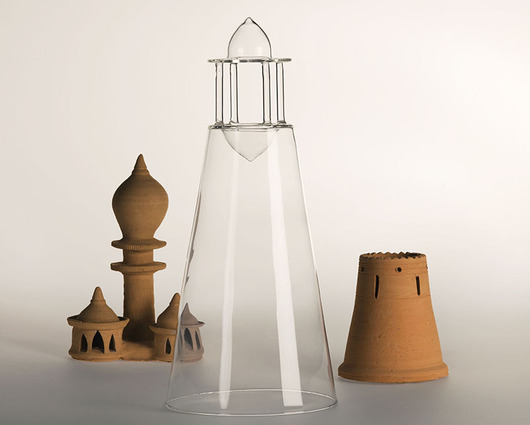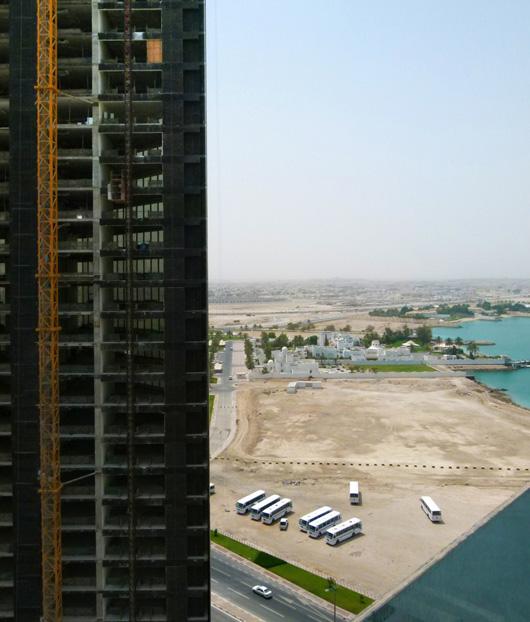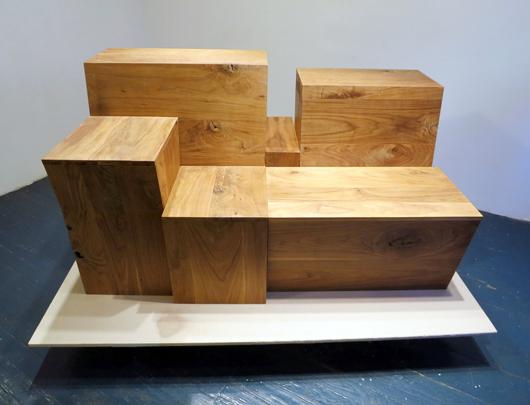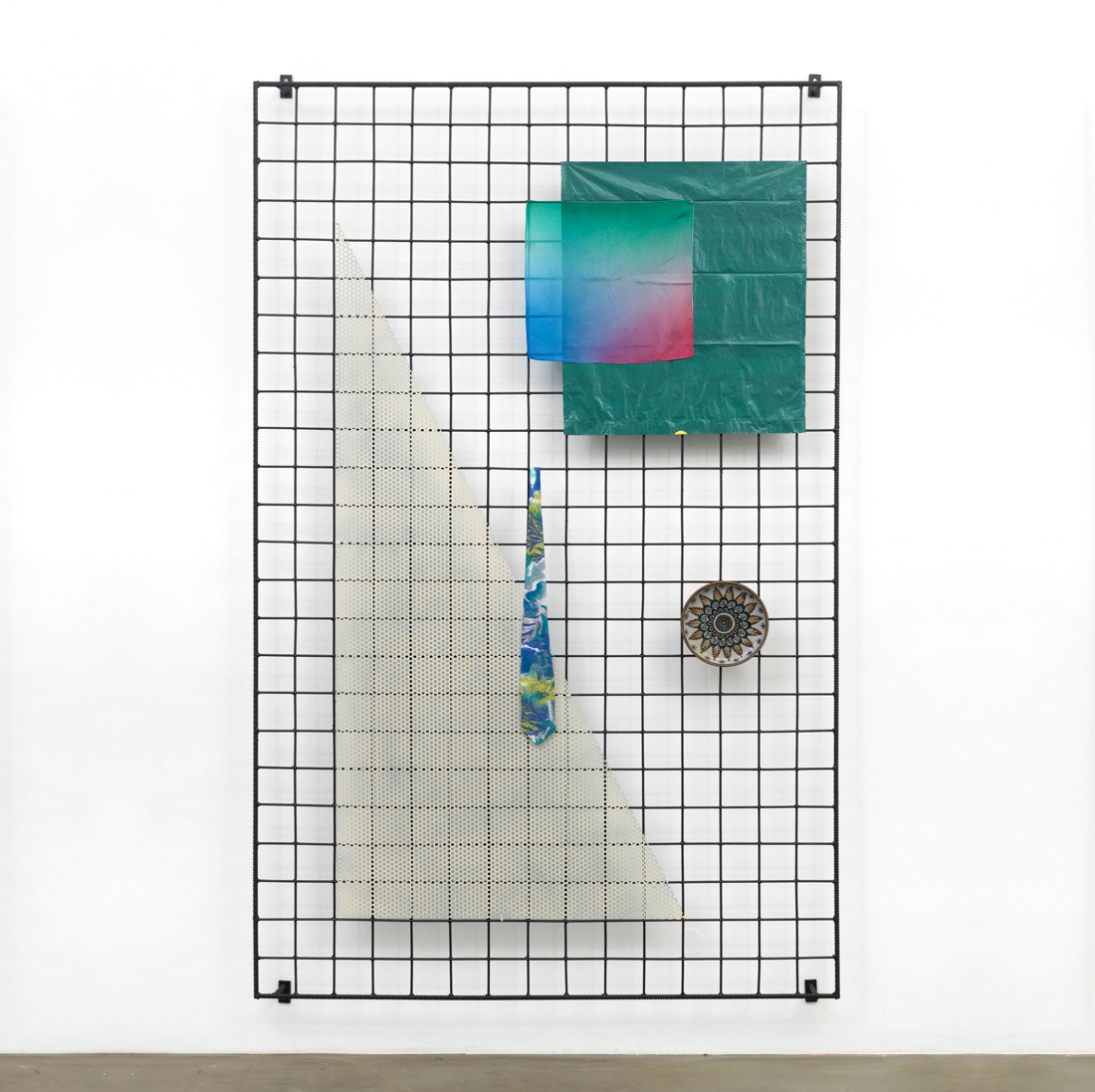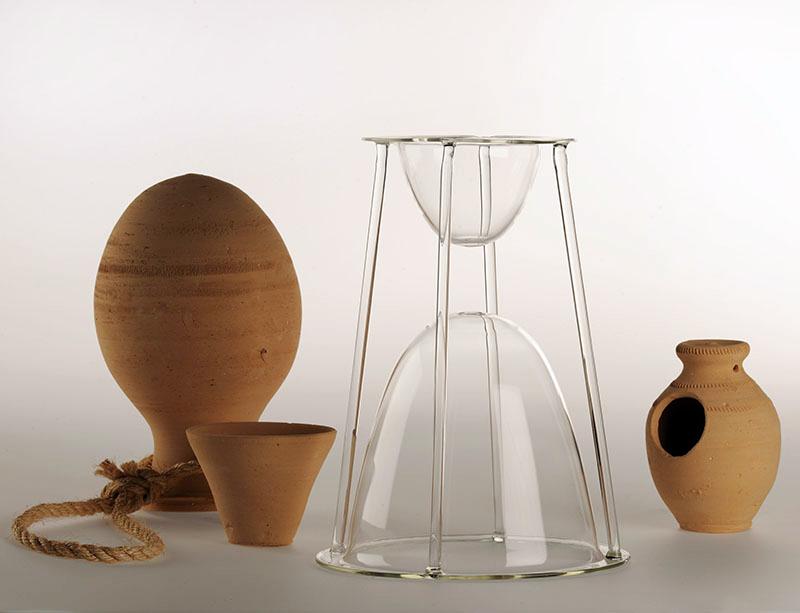
01.30.14
Excerpt: Exhibition
Constantin Boym at UrbanGlass
For anyone like us who “grew up,” professionally speaking, in the New York design world in the last few decades, it was always with a sense of awareness of and deference to the scene’s elder statesmen. Constantin and Laurene Boym, for example, set up Boym Partners back in 1986, and by the time we started circulating in 2005, they still felt markedly omnipresent, both critically and physically speaking. We suppose that’s why it felt so surprising when these New York stalwarts up and left town in 2010, after Constantin accepted a two-year tenure as director of graduate design studies at Virginia Commonwealth University in Qatar. They disappeared from New York design events, parties, exhibitions, and talks, only occasionally sending dispatches to their mailing list about life on the other side of the globe.
They returned to New York a year ago, but we hadn’t really heard from them until now — with the launch of Constantin’s new exhibition at Brooklyn’s UrbanGlass, “Learning From the East,” which opens this Saturday. There, he’ll exhibit a series of gorgeous Pyrex incense burners he created based on the ones he discovered and collected throughout his time in the Middle East, merging his New York practice with the ideas he brought back from his time abroad. We recently had the pleasure of interviewing Constantin about the project, from his discovery of the incense burners to whether his future work will continue to bear a Middle Eastern imprint. Read on below. 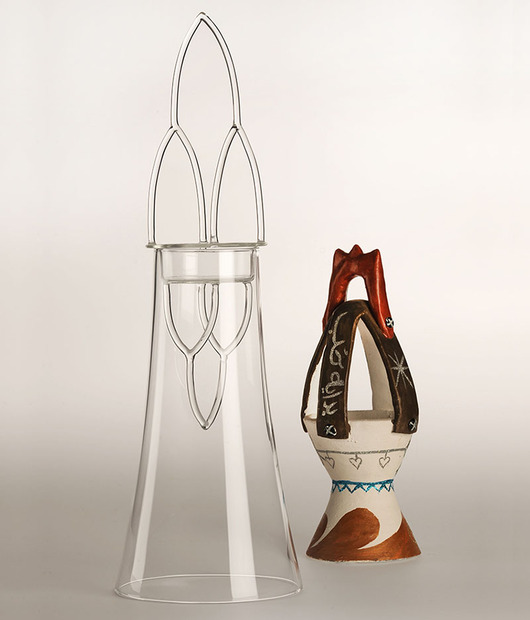
What has it been like being back from your sojourn for a year now? What do you and Laurene miss the most about Doha? Do you think the trip changed your New York practice or do you feel like you’ve picked up just where you left off?
I’d say that I was happy to move to Qatar, and I was even happier to return to New York. In a way, we’ve won twice. The two-and-a-half-year sojourn in the Arabian Gulf was a memorable experience. Inevitably, these experiences add to one’s outlook, one’s way of designing and of seeing things. In this respect, yes, we have changed. “You have to go away to come back” — that’s from Louis C.K.
Can you tell me a little bit about how you experienced the region’s decorative traditions while you were living there? Did you make an effort to visit artisans?
The goal and purpose of relocating to Qatar was to get involved in education (I was appointed an inaugural Director of graduate design course at VCU Qatar). This turned out to be quite a full-time occupation.
We, of course, were interested in design explorations, working with local craftsmen, etc etc. It turned out that not only that I had no time, but that there were hardly any crafts available for exploration. Qatar is a country that imports almost 100% of everything it uses. The very idea of “tradition” is almost oxymoronic for a country that is only a few decades old, for a country that is now so rich that it wants to completely re-write its own humble past.
The trips around the region proved more stimulating, especially visits to Oman, a truly ancient place where old craft traditions are still flourishing. My research and subsequent project with incense burners proved to be one rare experiment with decorative designs of the region.
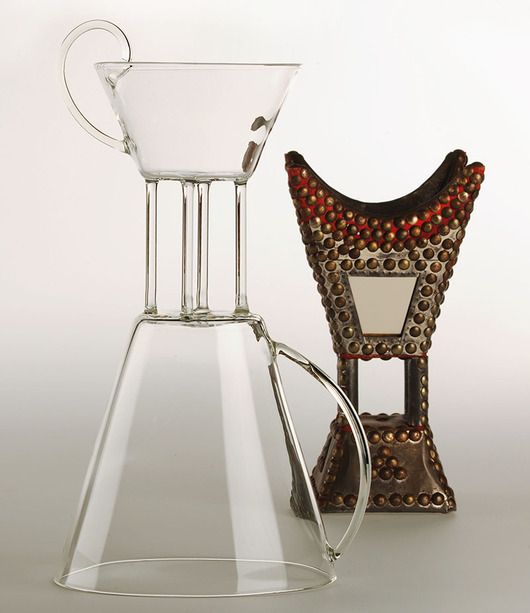
And what was your experience with mabkharas specifically? What made you decide to focus on the incense burner as a jumping off point for your own project?
It all started when I noticed these strange (then unknown to me) objects at local markets, and started to research and collect them. Eventually I wrote an article called True East; it was later published online in Design Observer. In the article I explain it as follows:
‘Ever since I came to the Middle East, I have been looking for authenticity. Tourists and visitors often search out authentic food. As a product designer, I wanted to find local, truly authentic products: things invented here, made here, and used here by the locals and their families. This proved to be far from easy. The vast marketplace – from souks to supermarkets – offers products that inevitably fall into one of the two categories: multiple reiterations of European/American prototypes, or commercial items specifically concocted for tourist consumption.’
‘Then I discovered something called mabkhara. First and foremost this object relates to the home, where it is a part of daily family traditions and some uniquely Arabic domestic rituals. There is, for instance, the habit of airing and perfuming the clothes, when a man or a woman would stand over a burning censer for a few moments to let the aromatic smoke permeate everything under the long robes. Other traditions guide the use of the object at gatherings of friends or family. During the meal and conversation it is common to have the incense burning in the majlis (special living room reserved for entertaining guests). At the end of the evening, the hostess will walk with the burner around the room, as if to refresh the air. For the guests this serves as a clear signal that the party is over.’
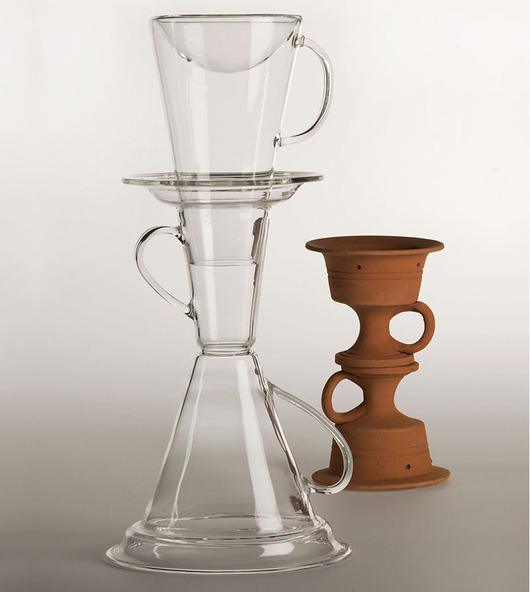
Your press release says that every Middle Eastern country has its own take on the incense burner — what’s the Qatari approach? And can you also talk a bit about the examples you chose to display in the show?
Functional requirements for an incense burner are very simple. The object has to be sufficiently stable, and a good handle for taking it around is a plus. The top, where one places a burning charcoal briquette, must obviously be fire resistant. Beyond these simple needs, the object can take any imaginable shape and almost any size. And it does. Form does not follow function here. If anything, form follows the objects’ material and their traditional way of making. Every Gulf country has a preferred material, special techniques, and a particular formal expression for its own version of mabkhara. Traditional objects sold in the bazaar would rarely cost more than $10.
Their material usually depends on existing craft traditions. For example, in Oman, where there is a developed pottery production, the incense burners are made of clay. In Yemen and Somalia, the bedouins make them out of meerschaum, a soft white material, lightweight, unbreakable, and easily suitable for carving. In Qatar, the Saudi tradition prevails, where the objects are made of sheet metal, or of wood covered with thin sheet metal. Therefore, the square shape has always been used, being more suitable for folding, bending, and soldering metal sheets.
In addition, there are many kitsch versions, which simply defy description, as well as contemporary electrical burners. Those remained outside of the scope of my collection.
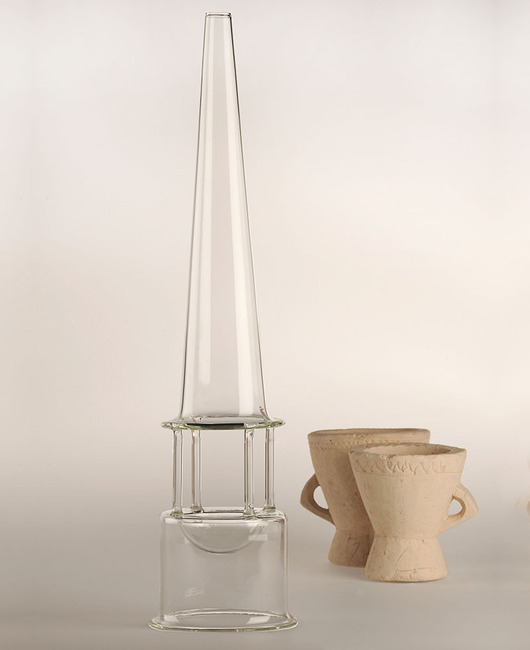
Can you describe the leap you made from the endemic versions you collected and the Pyrex versions you designed? Were you mainly simplifying and remixing shapes you saw in existing burners, or was it more about taking the overall feeling of the objects you collected and translating that in a more freeform manner?
My first article on mabkhara ended as follows:
“When a designer stumbles upon a new, relatively unexplored product typology, he and she immediately start thinking about making a design contribution of their own. Does the world need a new, designer version of incense burners? What would be the nature of ‘design improvement’ for these objects, which already serve their purpose so well? Perhaps I need to stay in the Middle East a little longer before I am able to answer these questions.”
This was written in early 2011, and by the end of that year I felt I was ready to take on this project. By luck, I got to know Massimo Lunardon, a glass master near Venice, who was working in Pyrex glass. Once the idea of using Pyrex was settled, the formal resolution was easy. There are certain common traits in the typology of of incense burners: their verticality, their festive celebratory spirit, and a certain iconic quality which makes them immediately recognizable as a type. My idea was to express all these characteristics in a very different material: clear, thin, almost invisible.
Were there any other functional considerations for these objects? It looks like these all have some sort of upper and lower chamber, for example.
It should be possible to carry a mabkhara (or just a part of it with the burning incense) around the house. That’s why most of them have handles. Some of my objects have an easily detachable top part for carrying. The larger and more stable lower part serves as a base.
What other projects are you working on in the near future, and are you finding that they also bear an influence from your time in the Middle East?
As far as we’re concerned, the Middle Eastern period of our lives is over. The idea, obviously, is not to simply forget about it, but rather to add those experiences to our way of designing and of seeing things.
Right now, Boym Partners is working on several new projects; some client-based, such as trade show displays for Nemo Tile Co, products for Fab.com, and wallcoverings for Wolf-Gordon. Then there is an exploratory self-generated project, related to our own old neighborhood in flux, the Lower East Side. It will be called LES Furniture Rehab. We pick up discarded old furniture from the streets (a never-ending creative and material resource) in order to rehabilitate and rethink it, to give it a new life. People create the future by discarding the past — this model is no longer sustainable. Perhaps this was one of the lessons I learned in the Arabian Gulf.
